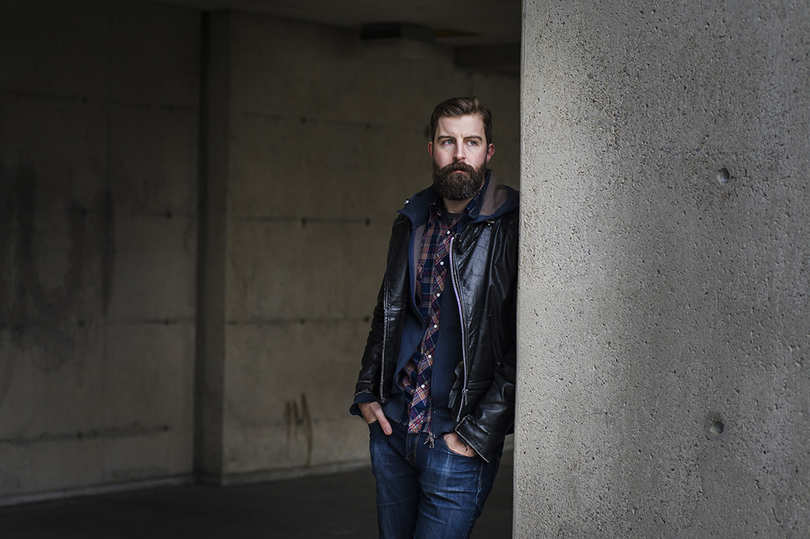“I’ve never seen a case like this,” said Perry, a former Toronto Police Service homicide detective who founded and runs the Pickering, Ontario-based Investigative Solutions Network. “It wasn’t going to be easy, but I’ve been an investigator for almost 40 years and I knew that there was some potential here that we might be able to solve the mystery.”
Reibling, an amateur sleuth, talked to other former colleagues, but their memories of de Bourcier had faded. A trip to de Bourcier’s alleged hometown turned up nothing. He called dozens of Toronto cemeteries looking for the grave. When Reibling finally got a location — Section 19 of Beechwood Cemetery — he found an unmarked grave.
Police told Reibling about the real Michael de Bourcier, the one he later found out died in May 1973 at 4 years old after falling from a truck driven by his father. The Michael de Bourcier that Reibling met in 2000 would have been roughly the same age as the child.
In a last-ditch effort to learn his friend’s true identity, Reibling searched through dozens of pages of missing person records, in hopes he’d find a headshot that resembled his heavyset, brown-haired, blue-eyed friend.
On March 16, 2015, he found the photo he was looking for.
“That’s him,” Reibling said four times when he discovered the profile of James Scott Walton.
“
I’ve never seen a case like this.
Dave Perry
Private Investigator
Walton, who went by Jim, went missing Aug. 2, 1992, from Caledonia, Ontario, when he left his family to come to the United States. He told his mother he was traveling to Syracuse to visit his friends from SU, which he attended for 15 months as a graduate student, from August 1988 until his graduation in 1989.
That fabricated trip to Syracuse was the last time Walton’s family and friends heard from him.
The car Walton drove was found near the Buffalo Niagara International Airport. Everything was inside except for his passport and the clothes he was wearing. No note. No apparent reason. Just gone. There’s belief that he had some financial trouble and wanted to disappear. There are theories relating to his knowledge of Russia and the time correlation between his disappearance and the fall of the Soviet Union.
Reibling, anxious and hesitant to re-open old wounds, cold-called Walton’s mother and sister along with Perry, the private investigator. The four agreed to meet to discuss the findings.
“It was tough,” Reibling said about the call, pausing to catch his breath as his stoic demeanor faded.
He hadn’t been able to hold back during his first meeting with the Waltons. In tears, they realized the man they both knew, one Jim Walton and one Michael de Bourcier, was the same person. DNA confirmed it on May 7, 2015. Yet the eight years between disappearance and friendship leave just as many questions as answers.
Missing Persons
There were many twists and turns in the life of Michael de Bourcier/Jim Walton. Here’s a breakdown of key events.
- 1965: James Scott Walton is born
- 1968: Michael de Bourcier is born
- May 1973: De Bourcier is killed in a car accident at age 4
- August 1988: Walton starts at the Maxwell School of Citizenship and Public Affairs
- 1989: Walton graduates from SU
- Aug. 2, 1992: Walton disappears
- 2000: Walton, now going by the identity of Michael de Bourcier, befriends Dylan Reibling at work
- April 3, 2002: Walton (de Bourcier) is found dead in his Toronto apartment
- March 16, 2015: Reibling discovers Walton’s missing person profile while searching for the real identity of de Bourcier
- May 7, 2015: DNA tests confirm Walton and de Bourcier are the same person
“The sad thing is, it’s such a waste of a life. Something that was so utterly forgivable – we certainly would have embraced him,” Walton’s sister, who, along with the mother, wished to have their privacy respected in the documentary, said about him disappearing. “It’s just sad that he felt that wasn’t possible.”
Sitting in his apartment — just a few blocks from the one where he got the original call — Reibling stops halfway through reading a text message from Walton’s sister. He wipes tears from his eyes.
“I didn’t really think of it as a missing persons case,” Reibling said. “It was always about me finding answers and it’s just been icing on the cake that they’ve gotten closure as well.”
Reibling isn’t settling on the fact that he found the identity of his friend. He’s moving forward with the search for what happened in those eight years, hoping to capture Walton’s entire life.
“That’s the big blank space,” said Perry, the private investigator.
It remains a mystery for now, though, as Reibling continues to press on, searching for answers about the man he thought he knew.
Banner Photo by Chris Katsarov
– 30 –







